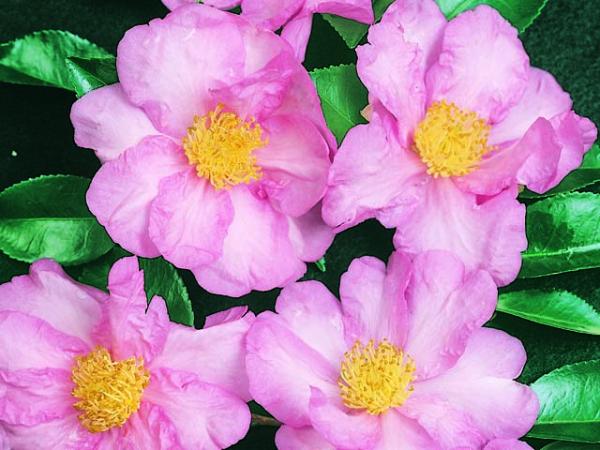Array
(
[0] => Array
(
[id] => 454
[is_published] => 1
[websiteID] => 5
[url] => /gardening/growing-banksias.php
[page_status] => Published
[number_of_ads] => 10
[can_use_editor] => 1
[last_modified_date] => 2013-09-16 00:00:00
[last_modified_by] => Alan
[checked_for_duplicate_content] =>
[title] => Growing Banksias
[heading] => Growing Banksias
[meta_description] => Learn how to grow Banksia in your garden.
[article_category_1] => Gardening
[article_category_2] =>
[article_category_3] =>
[article_category_4] =>
[article_category_5] =>
[business_category_1] => Landscaper
[business_category_2] => Nursery
[business_category_3] => Garden Designer
[business_category_4] => Landscape Architect
[business_category_5] =>
[number_of_google_mrecs] =>
[show_google_ad_bottom_of_page] =>
[show_get_quotes_top_of_page] =>
[show_get_quotes_rhs_of_page] =>
[show_directory_search_widget] =>
[show_trending_content_widget] =>
[show_facebook_widget] =>
[show_further_reading_section] => 1
[show_sponsors_section] => 0
[show_top_article_ad] => 1
)
[1] => Array
(
[id] => 448
[is_published] => 1
[websiteID] => 5
[url] => /diy/diy-paving.php
[page_status] => Published
[number_of_ads] => 12
[can_use_editor] => 1
[last_modified_date] => 2013-09-15 00:00:00
[last_modified_by] => Alan
[checked_for_duplicate_content] =>
[title] => DIY Paving in 4 easy steps
[heading] => DIY Paving in 4 easy steps
[meta_description] => Paving is not as hard as you may think. Here are four easy steps to creating a paved courtyard.
[article_category_1] => DIY
[article_category_2] =>
[article_category_3] =>
[article_category_4] =>
[article_category_5] =>
[business_category_1] => Landscaper
[business_category_2] =>
[business_category_3] =>
[business_category_4] =>
[business_category_5] =>
[number_of_google_mrecs] =>
[show_google_ad_bottom_of_page] =>
[show_get_quotes_top_of_page] =>
[show_get_quotes_rhs_of_page] =>
[show_directory_search_widget] =>
[show_trending_content_widget] =>
[show_facebook_widget] =>
[show_further_reading_section] => 1
[show_sponsors_section] => 0
[show_top_article_ad] => 1
)
[2] => Array
(
[id] => 191
[is_published] => 1
[websiteID] => 5
[url] => /gardening/best-natives-for-pots-and-small-gardens.php
[page_status] => Published
[number_of_ads] => 5
[can_use_editor] => 1
[last_modified_date] => 2013-09-16 00:00:00
[last_modified_by] => Alan
[checked_for_duplicate_content] =>
[title] => Best Australian natives for pots & small gardens
[heading] => Best Australian natives for pots & small gardens
[meta_description] => The trend towards smaller gardens has inspired the plant lovers in the nursery industry to respond with an ever-increasing range of Australian plants that will delight those who want to attract birds and butterflies and bring a little bit of the bush onto their balconies. From banksias to bottlebrush there are plants that will add colour and texture to provide year round interest.
[article_category_1] => Gardening
[article_category_2] =>
[article_category_3] =>
[article_category_4] =>
[article_category_5] =>
[business_category_1] => Landscaper
[business_category_2] => Nursery
[business_category_3] => Garden Designer
[business_category_4] => Landscape Architect
[business_category_5] =>
[number_of_google_mrecs] =>
[show_google_ad_bottom_of_page] =>
[show_get_quotes_top_of_page] =>
[show_get_quotes_rhs_of_page] =>
[show_directory_search_widget] =>
[show_trending_content_widget] =>
[show_facebook_widget] =>
[show_further_reading_section] => 1
[show_sponsors_section] => 0
[show_top_article_ad] => 1
)
[3] => Array
(
[id] => 190
[is_published] => 1
[websiteID] => 5
[url] => /gardening/australian-native-trees.php
[page_status] => Published
[number_of_ads] => 5
[can_use_editor] => 1
[last_modified_date] => 2013-09-16 00:00:00
[last_modified_by] => Alan
[checked_for_duplicate_content] =>
[title] => Australian native trees
[heading] => Australian native trees
[meta_description] => Learn what Australian native trees you should I grow in your garden.
[article_category_1] => Gardening
[article_category_2] =>
[article_category_3] =>
[article_category_4] =>
[article_category_5] =>
[business_category_1] => Landscaper
[business_category_2] => Nursery
[business_category_3] => Garden Designer
[business_category_4] => Landscape Architect
[business_category_5] =>
[number_of_google_mrecs] =>
[show_google_ad_bottom_of_page] =>
[show_get_quotes_top_of_page] =>
[show_get_quotes_rhs_of_page] =>
[show_directory_search_widget] =>
[show_trending_content_widget] =>
[show_facebook_widget] =>
[show_further_reading_section] => 1
[show_sponsors_section] => 0
[show_top_article_ad] => 1
)
)
Helpful articles
Growing Banksias. Learn how to grow Banksia in your garden.
DIY Paving in 4 easy steps. Paving is not as hard as you may think. Here are four easy steps to creating a paved courtyard.
Best Australian natives for pots & small gardens. The trend towards smaller gardens has inspired the plant lovers in the nursery industry to respond with an ever-increasing range of Australian plants that will delight those who want to attract birds and butterflies and bring a little bit of the bush onto their balconies. From banksias to bottlebrush there are plants that will add colour and texture to provide year round interest.
Australian native trees. Learn what Australian native trees you should I grow in your garden.
Plant description
Camellia sasanqua 'Paradise Diana' is a hardy evergreen shrub with large, showy pink single flowers with crepey petals and bright yellow stamens. It is a fast growing, bushy and vigorous upright plant with glossy green foliage to around 6 metres high, and is an excellent hedging variety. It is also good for espalier work, as a screen plant or as a specimen plant. It can be grown in a large container. It can be kept to a lower height with regular pruning. The foliage is good for cut flower work.
Sasanqua camellias can be grown in a sunny spot as well as being well suited to partial shade. They like a slightly acid, moist soil. Water regularly until established. They will handle periods of drought once established. They can be left to grow naturally, or clipped to shape. Fertilise in spring with a camellia and azalea fertilser or general purpose fertiliser. A good layer of mulch around the plant will help to keep the root zone cool, deter weed growth, and conserve soil moisture. They have few pests or disease problems.
Further reading: Hedges and
Pruning a hedge in 7 steps (articles written by horticulturalist Angus Stewart).
Additional plant information
Flowers
Flower colour: pink
Flowering season: autumn
Plant size
Maximum height: 6 metres
Minimum height: 1.5 metres
Maximum width: not specified
Minimum width: not specified
Sunlight, frost & salt tolerance
This plant will tolerate full or partial sunlight.
Medium frost tolerance.
Plant is salt tolerant.
Fauna attracting?
Yes. Attracts: Birds, bees, insects.
Climate
This plant species will grow in the following climates: cool, temperate, subtropical.
Soil types & conditions
Loam: moist, well-drained.
Clay: moist, well-drained.
Sand: moist.
Soil pH: 5.5-6.5
Pests
Scale, insects, bees
Miscellaneous information
Planting season: Any.
Types of fertiliser: Good general purpose fertiliser.
Find a nursery
Search for another plant

